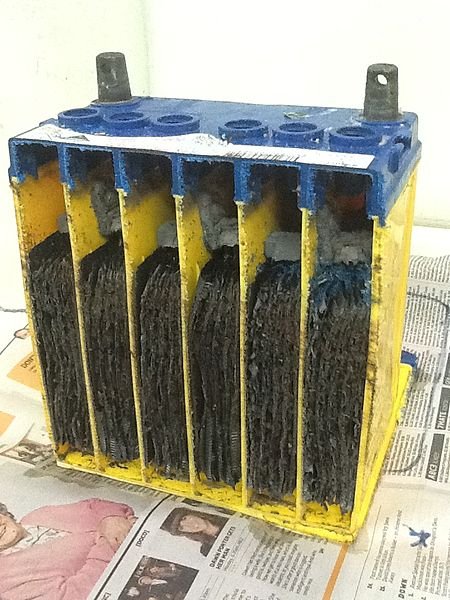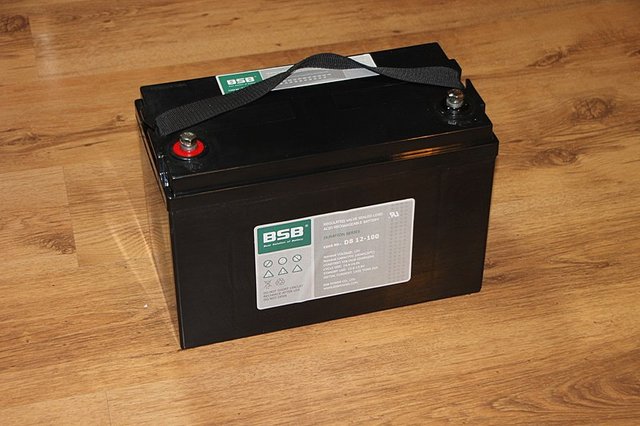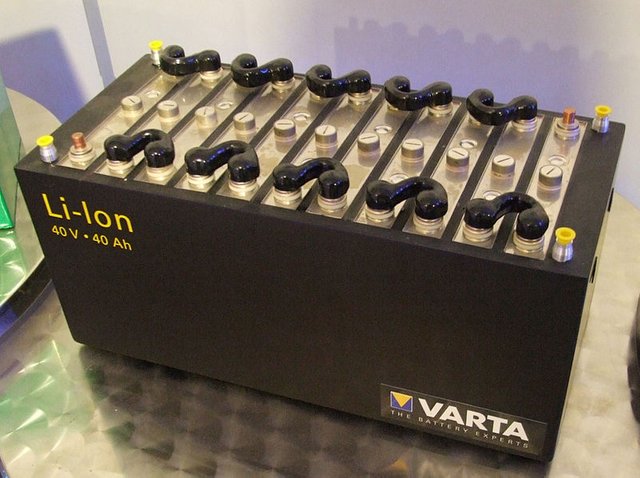The intermittent nature of some of the widely known renewable energy technologies around the world today, requires them to have a reliable storage system; that is equipped with the functionality of keeping a balance between energy demand and supply. Take for instance, the energy produced by the sun, its intensity and irradiation which allows the solar panel to give out electricity, are both dependent on factors like the time of the day, time of the year or weather conditions.
To justify that the balance is actually maintained between energy demand and supply, the electricity generated by these renewable sources needs to be stored especially when the energy production exceeds the energy consumed (peak production) at a go and with the intention of returning the stored energy back when energy production is very low, mostly at night. And with this process in place, this in turn bridges the gap between energy demand and supply; a means of providing a smooth and reliable source of electricity. There are several means of storing electricity known to man; ranging from the use of hydrogen fuel, solar thermal storage, pumped hydro dammed storage, battery storage system, compressed air, flywheels to mention a few.
But in this article, I will be addressing battery storage system only; an essential components in a solar power system that makes the system more firm and reliable. When it comes to understanding solar power system installation and designs, I was once a novice though not a professional yet, then I realise I could easily share the "not so much" experience I have acquired overtime with people who have little or no experience about the system. Because the fact still remains that, although the cost of acquiring the system is getting cheaper compared to what it was in the past, it is still expensive and we all need to do everything in our capacity to get the best efficiency out of the system and of course, at an affordable cost.
As an individual, I see an affordable storage system especially that of battery bank as the bridge between a reliable power supply and this so called "stop and start" energy source as I would always call them. And since this battery storage system is very expensive and is in no time planning to be economical anytime soon, the decision of which battery technology to used for the system is a crucial one and if not properly made, it takes a negative turn on one's expenses.
But what is a battery?
Its definition is no news to us as we are very familiar with this device and it's working operation, but for simplicity sake, a battery is nothing other than any device that has the capability of producing electricity from a chemical reaction. An outstanding feature that qualifies it as an essential component in a solar power system, is the ability to store electricity in chemical form and then convert the chemical energy stored back to electricity when needed. Contrary to the popular believe, batteries don't actually store electrical energy but store it in other form of energy that can easily be converted back to electricity when needed.
In a solar power system, be either it off-grid or on-grid, without a battery bank, you won't be able to stored the energy generated by the system, period! So it necessary to have one especially for an off-grid system and you should be aware that even having a battery bank doesn't actually grantee you having 24/7 back up power as this thought usually spring forth one of the major mistake alot of people going solar make always. What grantees constant backup power is a proper sizing of your battery bank to accommodate your energy demands for the desired duration for which you want it to power your appliances. Even for an on-grid system (hybrid system) with no battery means no power when there is power failure or maintenance are carried out at the utility end. So in short, batteries are very essential to keep our system going and functional.
What are the best battery for your solar power system
For solar engineers and installers, this might turns out no news but for those solar novice and enthusiast out there, I bet this information will help you to understand and know how to set you priorities right when going solar. Because of all the components that makes up a solar power system, a battery bank turns out to be a fragile key piece accompanied with variable properties that can easily be affected by a poor system design or sizing. And believe me you, I have witnessed how a poor battery bank can frustrate you, not to talk of waste of resources and time it takes.
Before I proceed further, I like to point out the obvious; flooded lead-acid batteries used in car or truck are one of the worst options for you solar power system. Although they are cheap and readily available around us, their designs are not suited for solar purposes. Why is this so? Car battery are designed to produce large current for a very short duration unlike deep cycle batteries used in solar application that produces less current for a relative long duration of time. Usually both batteries (car and solar) are of the same lead acid chemistry but their designs is what differs. Car battery have thin lead electrode and a less active electrolyte to maximise the plate surface area compare to that of a deep cycle lead acid batteries with thicker lead plate that fills the entire surface area and a more active electrolyte.

image source: Wikimedia under CC BY-SA 3.0
Back to where I left off. What are the best batteries for your solar applications? Prior to the popularly known battery technology in town, there are majorly three types of batteries that you can install for your solar power system, namely;
• Flooded Lead-Acid (FLA) battery
• Sealed Lead-Acid (SLA) battery
• Lithium ion battery
Flooded Lead-Acid (FLA) batteries are among one of the oldest battery technology in the world today. They are one of the worst choice for solar application even though they have been upgraded with more adaptive features for renewable energy. And as cheap as they are, they constantly requires proper maintenance to avoid fast degradation and are quick to complete their charge cycle in no time if not properly maintained.
Sealed Lead-Acid (SLA) batteries also known as Valve Regulated Lead-Acid (VRLA) battery are far better than FLA battery because they don't require watering and venting as needed in the case of FLA batteries. Their designs comes in a such way that they are able to recombine the hydrogen and oxygen that are suppose to be vented out back into water within the battery therefore needs no watering. They usually comes in two main versions namely; AGM (Absorb Glass Matte) and Gel cell (Gelified electrolyte cell). Both batteries operate on the same chemistry but what differs between them is their internal construction; which is where they got their individual names from. AGM batteries are the latest and the best of all the lead acid family. The battery technology makes uses of a separator made from fibreglass to hold the electrolyte in a confined space using capillary action. This effect makes them "spill proof" when exposed to high amperage. Gel cell electrolyte on the other hand, are jelly-like substances made from combining silica with the sulphuric acid. On exposure to high amperage or fast charging scenarios, the jelly substance becomes wounded, thus creating a pocket that allows the electrode to start to wear away, causing premature failure.
.jpg)
image source: Wikimedia under CC BY-SA 3.0
Of all the three types of batteries listed above, lithium ion battery is the best. Virtually all cell phone, laptops, PDAs makes use of this battery technology owing its long lasting, robust and durable features. They are lighter and smaller in size compared to lead-acid battery of the same capacity. For solar application, it's best to used lithium ion battery because of its long life (of around 3,000-5,000 cycles) and its efficient of almost 99%. Although they are very expensive, there are several benefits to justify its cost.
Well with all that being said, when choosing a battery type for your solar applications, there are some certain criteria you must put into consideration in other to ensure a long lasting life for your batteries at an efficient rate. These criteria includes;
• Maintenance
• Capacity
• Depth of discharge (DOD)
• Round-trip efficiency
• Longevity
• Cost
Battery Maintenance are preventive measures kept in place to prolong the life of our batteries and also to helps keep them in good shape. Aside the FLA batteries that requires constant maintenance such watering the cell and venting them to keep the hydrogen gas level safe, there are some safety measure that are needed to be kept in place. Take for instance, Batteries in parallel, the more parallel strings you have, the more likely you have an uneven charging and discharging. Just a slight voltage difference between the strings can result into a short life span of the battery.
Another one is temperature; batteries deteriorate faster at higher temperature likewise at freezing (lower) temperature. So in other to keep our battery safe, they must be kept at moderate temperature as specified by the manufacturer. Check out this article for more information on how to properly maintain your batteries.
The Capacity of any battery is refers to the maximum amount of energy in kilowatt-hour that a battery can take or store. If you are very conversant with battery, you would realize that the more the energy your battery can store, the bigger the size and the capacity but this doesn't actually determine the amount of electricity it can deliver. Just as I have explained above; in the case of car battery and deep cycle battery, even though both batteries turns out to be same rating and the same size, the electricity produced from these batteries will differ due to the differences in their designs.
Depth of Discharge! A key criteria that determines the strength and the life span of a battery. DoD of any battery can be defined as the amount of battery capacity that can be used without causing a premature damage to the battery cells. Certified manufacturer will state exclusively the maximum DoD for optimal performance sake. Take for instance, the DoD for virtually every lead-acid battery I have come across is 50% and let say your battery bank capacity is 10kWh, the total usage capacity of the battery will be 5kwh. Exceed this limit before recharging it will cause an irreversible damage to your battery.
A simple definition for Round-trip efficiency is the usable percentage of energy that can be consumed immediately from the energy used for charging the battery. Take for instance, a battery with 50% round-trip efficiency. When charged with 10kW of electrical energy, it will only gives out 5kW (50% of its charging energy). You should be aware that a higher percent of round-trip efficiency means you get more useful energy from your battery.
Longevity is among one of the major criteria you need to look forward to when going solar. Acquiring a battery storage system that has a long life span will save you unexpected expenses on the long run. Longevity is related to quality of long-lasting life that batteries are ideally designed to have. They are usually allocated cycles (numbers of charge and discharge period) that a battery is expected to use before degradation starts as stated by the manufacturer.
The cost of any battery depends on factors like the battery technology, its efficiency and most of all its manufacturer. As we all know that renowned battery producer tends sell their product a bit more expensive. Why? If you still remember the law of supply and demands from our elementary economics; the higher the demand, the higher the price. And after all, they produce quality battery but that doesn't mean all other batteries are bad. So the more efficient the battery, the higher the cost.
My take, my recommendation
When asked based on past experiences and dealings on what the best battery for your solar applications is. For me, the best battery for your system depends on you. Yea, you! Your wants, expectations and budget for the system will determine the type of battery to choose from. If what you desire a completely off-grid package, you will need a battery bank that has a long life and that is equipped with the capacity to meet your daily power demand at an efficient rate. Lithuim ion battery is your best bet. It's offers various off-grid benefits over all other batteries such as;
• It requires no maintenance
• It has more usable storage capacity
• Higher DOD to maximize its economic value
• Fast charging capacity to mention a few.

image source: Wikimedia under CC BY-SA 3.0
With lithium batteries, you can easily expand your system by combining new batteries with old ones since each batteries comes with a seperate battery management system (BMS) which causes them to charge individually unlike lead acid batteries that will adopt the charging features of the old ones and in turn causes the new ones to age prematurely.
But let say you can't afford to buy a lithium battery for your complete off-grid system and you want a more cost-effective option for your system, your best bet is flooded lead acid battery. I know you would be wondering why flooded lead acid batteries right when there are better lead acid technology. The truth is FLA batteries have more charge cycle than other lead acid technologies provided you are comfortable with getting your hands dirty a little bit. To get the best out of them, they require constant maintenance such as keeping their terminals clean, regular checking of water level, refill them when low and also keeping them in a well ventilated area to allow proper venting of its gases.
For your on-grid system or partial off-grid system, you can make use of AGM battery or Gel battery. Reason being that these batteries have less life span compares to all other technologies even though they are better than FLA batteries (that is maintenance free). And you should be aware that for your on-grid system, you would only need your battery back up to power your household once in a while especially when the utilities grid is down or is undergoing maintenance. With this, the numbers of cycles used over the years is very minimal, in turn prolonging the life of the batteries. And for your partial off-grid system, say for instance you have a house you use to visit once in a while, let say a vacation house you visit a few times in the year. VRLA battery will suits you perfectly since you will be using the system once a while just like the case of your on-grid system.
And lastly, ensure that no matter the kind of battery technology you are choosing for your system, make you are buying from a reliable manufacturer. I am very positive you don't want to use refurbished product I bet you. I hope this article has being helpful in one way or another and till next time fams, keep steemit.
References
• Ways to store electrical energy on the grid
• Difference between the lead acid battery technology available
• Best Battery for your solar project



This post has been voted on by the SteemSTEM curation team and voting trail in collaboration with @curie.
If you appreciate the work we are doing then consider voting both projects for witness by selecting stem.witness and curie!
For additional information please join us on the SteemSTEM discord and to get to know the rest of the community!
Downvoting a post can decrease pending rewards and make it less visible. Common reasons:
Submit
Nice writeup Bro...are li-ion batteries also called deep cycle batteries?
Downvoting a post can decrease pending rewards and make it less visible. Common reasons:
Submit
Yes, they are. Deep cycle battery are batteries that have the capacity of being supplying less current over a very long time.
Downvoting a post can decrease pending rewards and make it less visible. Common reasons:
Submit
This is why we need concurrences to keep the price reasonable, even with a high demand. I am sure this will come at some point!
Downvoting a post can decrease pending rewards and make it less visible. Common reasons:
Submit
I hope it does eventually. Thanks for coming by
Downvoting a post can decrease pending rewards and make it less visible. Common reasons:
Submit
Thank you so much for sharing this amazing post with us!
Have you heard about Partiko? It’s a really convenient mobile app for Steem! With Partiko, you can easily see what’s going on in the Steem community, make posts and comments (no beneficiary cut forever!), and always stayed connected with your followers via push notification!
Partiko also rewards you with Partiko Points (3000 Partiko Point bonus when you first use it!), and Partiko Points can be converted into Steem tokens. You can earn Partiko Points easily by making posts and comments using Partiko.
We also noticed that your Steem Power is low. We will be very happy to delegate 15 Steem Power to you once you have made a post using Partiko! With more Steem Power, you can make more posts and comments, and earn more rewards!
If that all sounds interesting, you can:
Thank you so much for reading this message!
Downvoting a post can decrease pending rewards and make it less visible. Common reasons:
Submit
Congratulations @sunkanmi02! You have completed the following achievement on the Steem blockchain and have been rewarded with new badge(s) :
Click here to view your Board
If you no longer want to receive notifications, reply to this comment with the word
STOPDownvoting a post can decrease pending rewards and make it less visible. Common reasons:
Submit